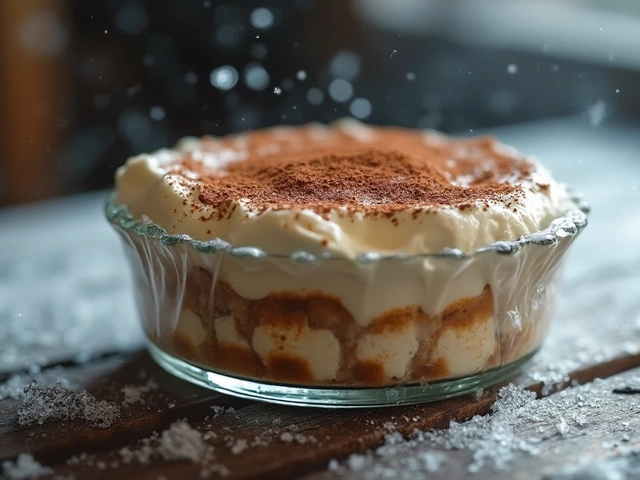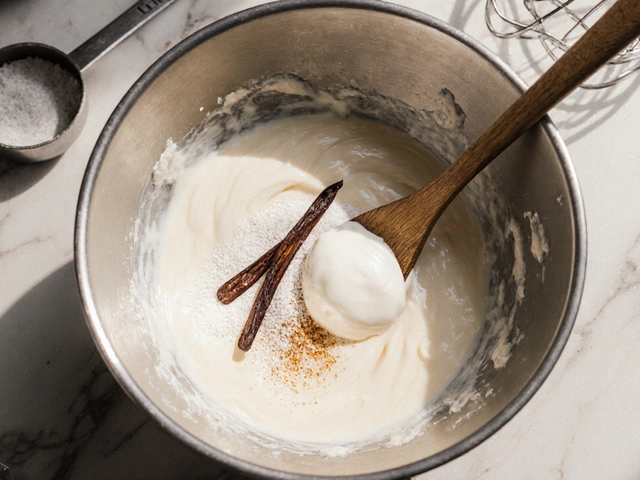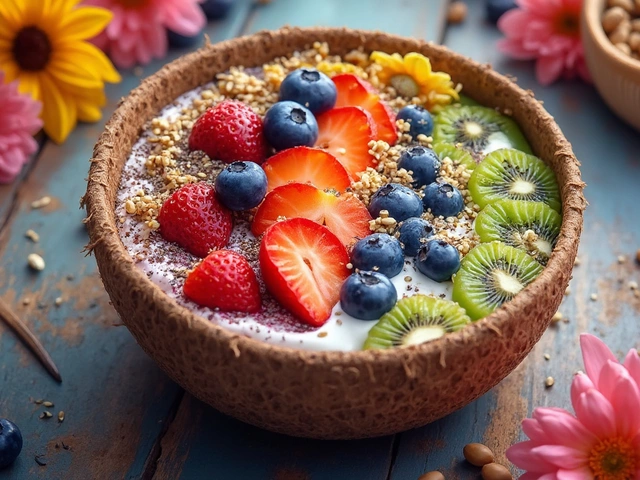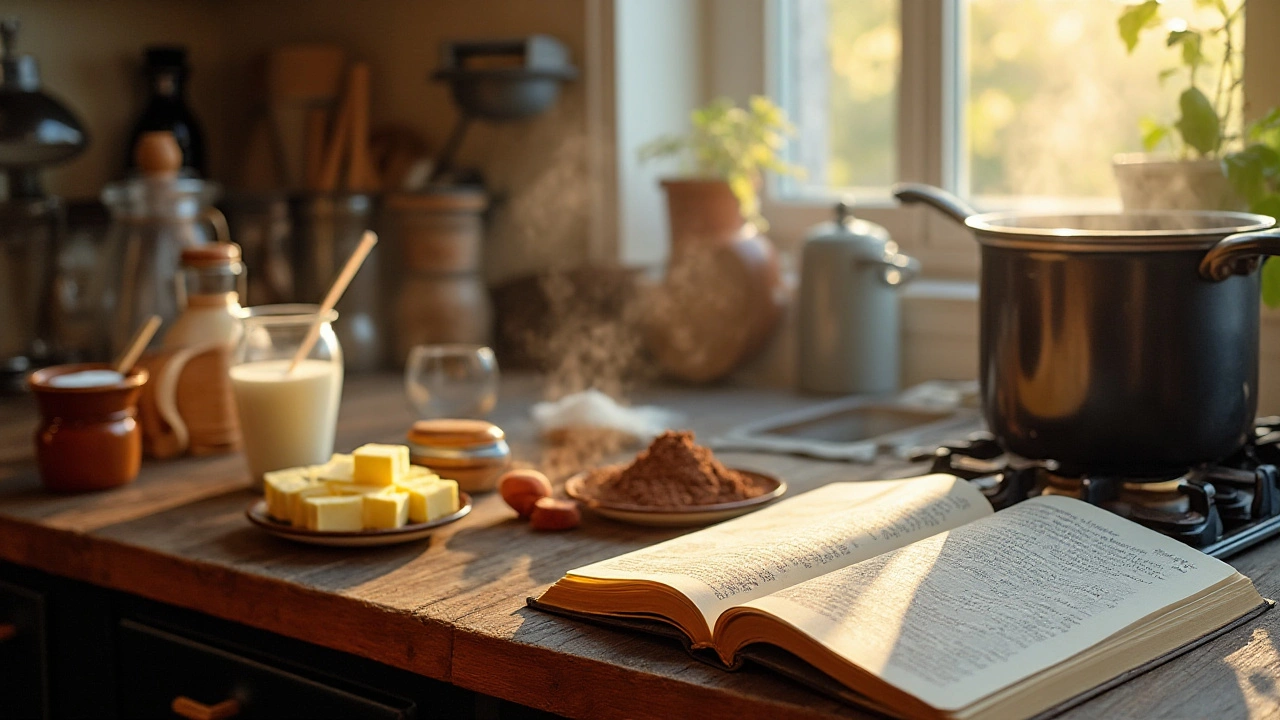
Diving into the warm embrace of rich, creamy fudge is a journey every dessert lover should embark on. But once you're there, a delightful question arises: what sets fudge apart from chocolate fudge? While it might sound like a minor distinction, the difference brings a world of flavor and texture variations worth exploring.
Fudge, in its essence, is a smooth confection made primarily with sugar, butter, and milk, a short list of ingredients that allow for endless customization. Yet when chocolate joins the recipe, the fudge transforms, taking on hues much deeper and flavors even more decadent. This simple addition not only changes the taste but also influences the texture and firmness.
Understanding the differences might just lead you to create the most delightful fudge ever to come out of your kitchen, from classic vanilla to the lush layers of chocolate fudge. Come, let's unfold the sweet science, and art, behind these beloved treats, revealing recipes and tips to guarantee each bite is a taste of perfection.
- Origins and History
- Core Ingredients
- Cooking Techniques
- Popular Fudge Variations
- Tips for Perfect Fudge
Origins and History
The delectable world of fudge carries with it a rich tapestry of history, interwoven with delightful tales and a touch of culinary mystery. Fudge, as we savor it today, began its sweet journey in the late 19th century. It seems the delightful confection may have been a happy accident, believed to be the result of a botched batch of caramel, as whispered by confectionery historians. This charming culinary mishap supposedly occurred in the United States, giving birth to what we now fondly call fudge.
Back in the day, fudge became a sought-after treat in women's colleges like Vassar, Wellesley, and Smith, where students would whip up the sugary delight to enjoy and share with friends. This spread of fudge’s popularity is captured in a quote by the renowned culinary historian Kristine Allen:
"Fudge recipes were akin to social currency among the young women of the era, shared and perfected in bustling dormitory kitchens."In the years that followed, fudge recipes proliferated in cookbooks and ladies' magazines, highlighting its growing place in American home-cooking culture.
As for chocolate fudge, its rise is entwined with the booming chocolate industry of the early 20th century. When chocolate became more widely available and less expensive, it quickly found its way into numerous desserts, including fudge. Chocolate fudge emerged as a new sensation, a luscious variant that drew in chocolate lovers with its deep flavor and slightly firmer texture. This delicious evolution reflects a time when American palates were broadening, embracing new ingredients and bolder tastes. The lore of chocolate fudge extends beyond borders as it became a staple treat in gift shops and tourist destinations, from bustling city street fairs to rural country stalls. It embodies an era when homemade sweets were crafted from the heart, dotting holiday favorites and birthday celebrations across the nation.
The legacy of fudge continues to evolve. Today, fudge is more than a nostalgic treat; it is an expression of creativity and flavor, endlessly adaptable and loved by many. There are countless modern adaptations, featuring everything from sea salt and caramel infusions to spiced and nutty concoctions. Yet, no matter how sophisticated the variations become, the roots of this sugary indulgence remain firmly planted in its historic birthplace, echoing the simple pleasure sought by those early college girls and the many fudge enthusiasts that followed in their sweet footsteps.
Core Ingredients
At the heart of any delightful batch of fudge, you'll find a simple yet scrumptious combination of ingredients. The classic and beloved versions essentially revolve around sugar, butter, and milk or cream. These foundational elements are crucial in defining the fudge's texture, which spans the spectrum from chewy to silky smooth. A critical part of these ingredients' magic is how they are combined and cooked, which determines how the sugar crystallizes, contributing significantly to the fudge's quintessential mouthfeel. The bubbling cauldron of sugar and dairy develops not just sweetness but also complex flavor notes reminiscent of caramel, all intensified with a hint of vanilla.
On the other hand, when we talk about chocolate fudge, the introduction of chocolate, whether in the form of cocoa powder or solid chocolate pieces, distinguishes it from its traditional counterpart. This ingredient not only imparts a darker hue but also enriches the taste, adding layers of chocolatey goodness that captivate with each bite. This variation often leads enthusiasts to question the precise role that chocolate plays within the spectrum of fudge recipes. While the proportion of chocolate to the fundamental fudge ingredients can vary, it is this balance that often requires careful attention to achieve the desired depth of flavor and texture.
In the intricate science of fudge-making, precision in measuring and quality of ingredients can make all the difference. The type of sugar used, for example, can influence whether the fudge melts seamlessly in your mouth or maintains a robust firmness. Granulated sugar is traditionally preferred because it dissolves readily and sets well, assisting in achieving that perfect, creamy finish. Meanwhile, the choice between using whole milk, condensed milk, or even heavy cream can alter not only the richness but also how the fudge sets as it cools. Butter, on its part, adds richness and a smooth consistency, making it integral to the fudge's final taste.
The interaction between these ingredients during cooking is crucial. It involves heating the mixture to the optimal temperature, often referred to as the 'soft-ball stage,' a sweet spot where the fudge begins to set into its characteristic texture. Precision here cannot be overstated; too high a temperature might result in a grainy finish, while too low may prevent the fudge from firming up properly. As food historian Sarah Lohman notes in her exploration of sweets, "
Fudge's birth is a beautiful accident of sugar crystallization, where the art meets science in a dance of timing and temperature." This delicate dance, paired with the nuances of ingredients, results in a delicious union of flavors, bound to please any sweet tooth.
For those willing to experiment, incorporating additional ingredients can lead to exciting results. Nuts like pecans or walnuts can provide a crunchy counterpoint to the creamy base, while marshmallows introduce a light and airy texture contrast. Occasionally, adventurous cooks might infuse unconventional elements like sea salt, spices, or even liquors to push the traditional boundaries of fudge-making, inviting new dimensions of flavor. These variations make each batch of fudge a personalized treat, emphasizing the importance of core ingredients and the creative potential they hold. Whether you lean towards a traditional setup or dive into chocolate-laden variations, understanding these core ingredients is essential to mastering the art of fudge.
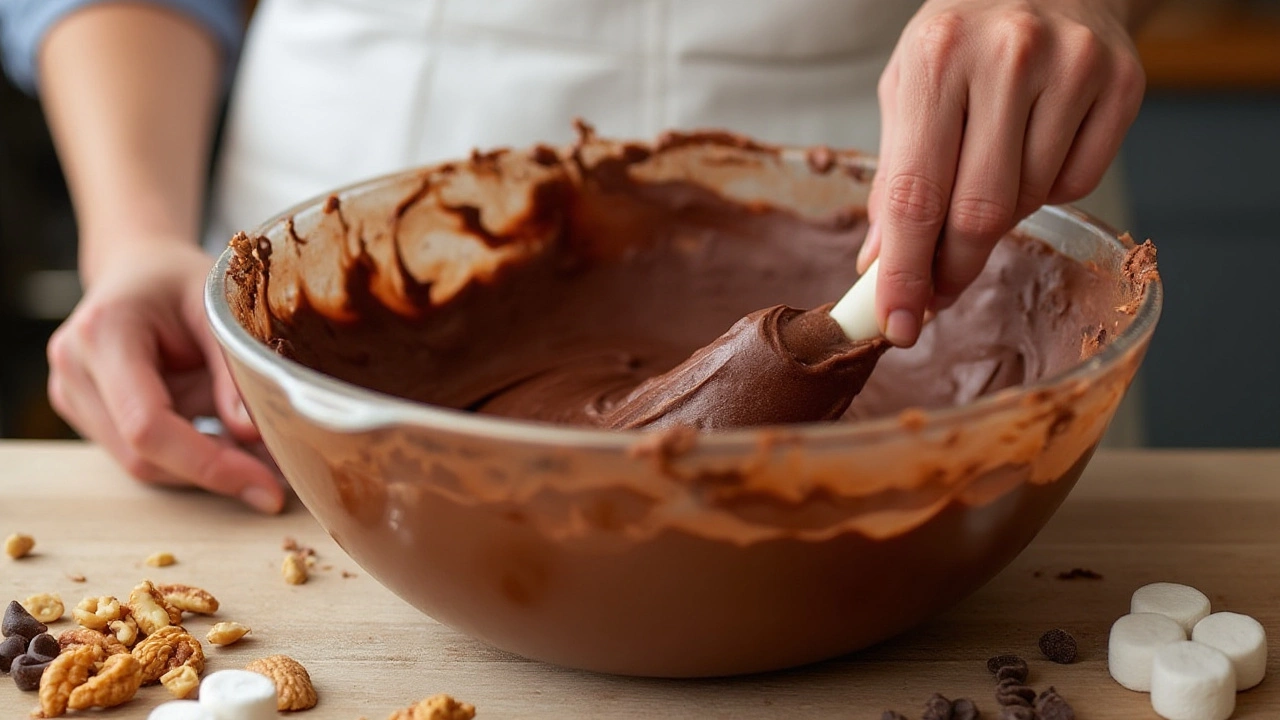
Cooking Techniques
Creating the perfect batch of fudge, whether it's the classic or the chocolate fudge variety, involves mastering a few key cooking techniques. The process begins with selecting high-quality ingredients, which make a noticeable difference in the texture and flavor of the fudge. Begin by combining your chosen sugars, often a mix of granulated and brown for depth, with butter and milk (or cream for richer versions). This mixture is gently cooked over medium heat. It's crucial to ensure that the sugar fully dissolves, as any undissolved crystals could lead to a grainy fudge, rather than the smooth texture you’re aiming for.
Another pivotal step in crafting the ideal fudge is reaching the perfect temperature. Digital thermometers are your best friend here. For traditional fudge, you're looking to hit what's known as the 'soft ball' stage, around 234°F (112°C). This ensures the fudge will set correctly but still remain deliciously creamy. Stirring is an art in its own right—constant yet careful stirring ensures even cooking and prevents sticking or burning at the pan's bottom. Once the right temperature is achieved, remove the mixture from heat and let it cool undisturbed until it reaches about 110°F (43°C). This cooling period is critical for proper crystallization, which in turn affects the texture.
Once cooled, the key to achieving the right consistency is in the beating. This is where your arm muscles get a workout, or perhaps just your trusty mixer. Beating incorporates air, enhancing the texture, and if you’re making chocolate fudge, this is when you'll see its smoothness truly come to life. Stirring affects both the final texture and appearance, determining whether your fudge ends up smooth or rough.
"Good fudge is like a whisper of sweetness," says renowned confectioner Sophie Wright. "Achieving that whisper takes precision and a little patience in the kitchen."After beating, pour the thickened mixture into a prepared pan, usually lined with parchment for easy removal. Let it set completely at room temperature, resisting the urge to refrigerate quickly as this can sometimes alter the texture, making it less creamy.
Navigating through these cooking techniques brings a delightful satisfaction, especially when the process ends with a batch of fudge that's velvety smooth and ready to satiate any sweet tooth. These methods, though simple once mastered, involve an intricate dance of waiting and work that makes the end result all the more rewarding. For those eager to refine their skills, trying both the basic fudge and its chocolate counterpart allows exploration of subtle nuances in taste and texture, pushing the boundaries of this sweet art. Over time, personal twists—like adding nuts, sea salt, or a splash of vanilla—transform each batch into a unique experience, offering endless opportunities to experiment and perfect one's craft.
Popular Fudge Variations
When it comes to fudge, the possibilities are as expansive as the imagination itself. This sweet confection has captured hearts worldwide, and its variations make it a versatile treat suitable for any palate. From the traditional nutty swirls to exotic new flavors, fudge is a canvas for culinary creativity. The variety ranges from the classic fudge recipes that many have cherished for generations to gourmet spins that feature everything from layers of raspberry and sea salt to zesty citrus undertones. Imagine a luscious peanut butter fudge, where creamy peanut butter melds seamlessly with the sugary core, delivering a rich, nutty experience perfected in texture and taste.
One of the more popular variations is chocolate fudge, which adds depth with its cocoa-rich flavor. It's often favored during festive seasons, blending easily with ingredients such as marshmallows and nuts, providing both a textural contrast and bursts of flavor. On the other hand, those with a penchant for the unexpected might find joy in a surprising mix of chili and chocolate fudge, offering a spicy kick that tantalizes the taste buds just when you least expect it. The creativity doesn't end there; think of a fudge that incorporates matcha, giving a soft earthy bitterness that contrasts beautifully with the sweetness, creating a balanced taste profile.
"Fudge has always been a dessert that lends itself to experimentation—inventive home chefs and professionals alike have redefined it over the years," says a renowned pastry chef.
In today's culinary landscape, fusion fudge options are making waves. These are hybrids of different cultural desserts, merging the charm of fudge with elements like Indian cardamom sweets or Middle Eastern halva. In many places, fudge has even become a celebration upgrade, with cake and caramel fusions making their way into birthday festivities. An interesting fact is how fudge's evolution has been embraced by the vegan and health-conscious communities as well. There's a surge in plant-based fudge options, which use alternate sweetening agents like maple syrup or agave, and include ingredients such as coconut oil and almond milk to craft fudge that's friendly to various dietary needs.
To truly appreciate the scope of fudge experimentation, one must also explore the tantalizing realm of boozy fudge. Variations that incorporate spirits like bourbon, rum, or Bailey's bring a sophisticated twist to this beloved confection, lending complexity and robustness with each bite. Nowadays, these renditions are a popular choice for adults looking to bring a crescendo to their celebration tables. In creating your own version at home, consider combinations that play with textures and flavors to truly make them pop, such as incorporating candied ginger for an added zing.
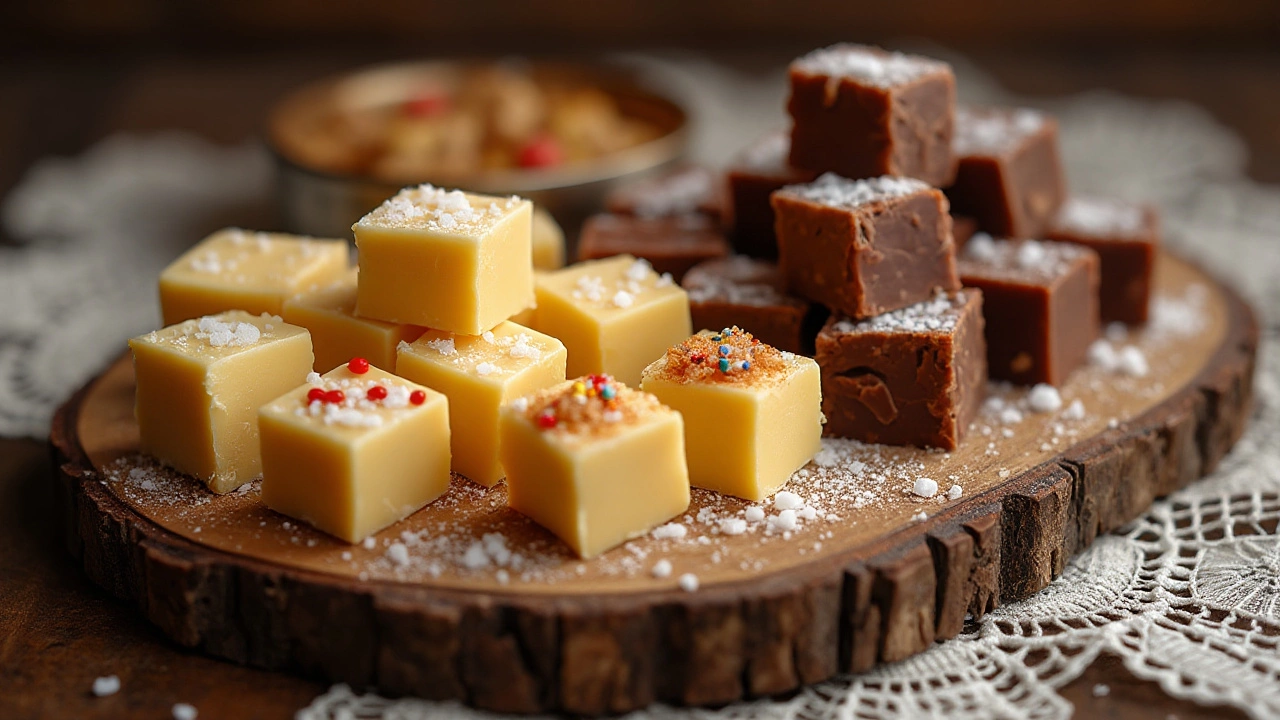
Tips for Perfect Fudge
Creating the perfect fudge is both an art and a science, requiring attention to the smallest of details to ensure a creamy, delightful result every time. One of the first considerations is the quality of ingredients. Opt for high-grade sugar, fresh butter, and rich heavy cream, as these basic elements form the backbone of your fudge experience. When venturing into chocolate fudge territory, using premium chocolate, whether dark, milk, or white, elevates the final product, transforming a simple treat into a confectionary masterpiece.
Temperature plays a crucial role in making good fudge. A candy thermometer will be your best friend, allowing you to gauge the precise moment when your mixture reaches the soft-ball stage, typically between 234-240°F (112-116°C). At this point, the sugar, butter, and milk mix perfectly to form the desired smooth and creamy texture. Many accomplished chefs recommend stirring constantly and employing patience, as rushing through or skipping the stirring can create unwanted graininess. This patience and precision are paramount for both classic and chocolate fudge recipes.
Once the ingredients have reached the optimal temperature, the cooling process begins. While waiting for the fudge to cool down—often 15-20 minutes—you can prepare your chosen molds or containers. A well-prepared, buttered pan or one lined with parchment paper ensures easy removal once the fudge is set. Take this time to decide on any mix-ins or toppings; from crushed nuts to marshmallows or even a sprinkle of sea salt, these choices can make your fudge truly unique. One expert pastry chef once remarked,
"Fudge is like a canvas; the flavors you add make it a personal masterpiece."
For those seeking an even creamier texture in their fudge, consider beating the mixture after it has slightly cooled. Using a wooden spoon or a strong spatula, stir with vigor for about 5 to 10 minutes. This can help break down any remaining sugar crystals and incorporate some air, lending a lighter texture. However, be cautious not to overbeat, as this might result in crumbly rather than creamy fudge. It’s a delicate balance that can be perfected with practice and intuition.
Lastly, storing your fudge properly ensures it remains fresh and delicious. An airtight container is recommended, keeping it at room temperature unless the weather is particularly warm, in which case the fridge is your friend. It's wise to layer parchment paper between pieces to avoid sticking. Whether making chocolate fudge or its classic counterpart, these steps will guide you to consistently delectable results, delighting your taste buds and those of your lucky guests.

